Treatment for lipomas mostly aims to manage symptoms, shrink them, and address any cosmetic concerns. Generally, you won’t need surgical removal unless the lipoma hurts or restricts movement.
If you seek treatment, there are several options depending on the size and location of the lipoma. Here are some key tips for managing lipomas effectively.
Key Highlights
- Lipomas are safe, slow-growing lumps made from fatty tissue. You usually feel them under the skin.
- These soft and flexible bumps are not often painful and usually don’t need any treatment.
- You can often see them on the neck, shoulders, back, arms, and thighs.
- It is unclear why they occur, but family history and genetics could be factors.
- To find a lipoma, doctors usually perform a physical exam. They might also use imaging tests like ultrasound or MRI.
Understanding Lipomas
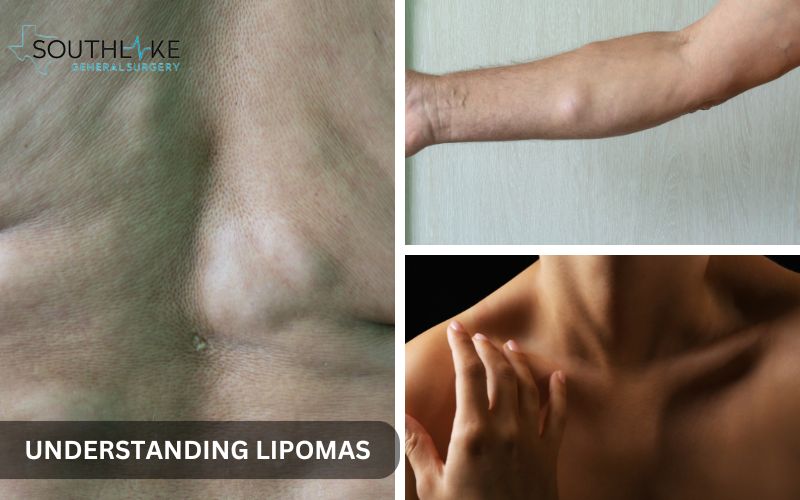
Lipomas are harmless lumps of fat that develop under your skin. They usually don’t cause pain and are mostly a problem for how you look. You often find them on the upper body, arms, and thighs.
If you notice any unusual skin bumps or changes, it’s important to seek medical advice right away. This helps you discuss treatment options and check for any health issues.
Defining Lipomas and Their Common Types
Lipomas are non-cancerous bumps. They form from an excess of fat cells in the soft tissue of the body. You can often spot these lumps just under your skin. They grow slowly and feel soft, similar to dough or rubber. You can easily move them around with your finger, which shows they do not stick to the skin.
There are many types of lipomas. Every type has special qualities.
- Conventional lipomas: This one is the most often occurring form. They consist of white fat cells.
- Angiolipomas: These contain fat and blood vessels. This can make them feel tender or painful sometimes.
- Fibrolipomas: This type has fat cells and fibrous tissue, making it feel firmer.
Knowing these types helps doctors pick the right treatment for their patients.
Recognizing the Symptoms: When to Seek Medical Advice
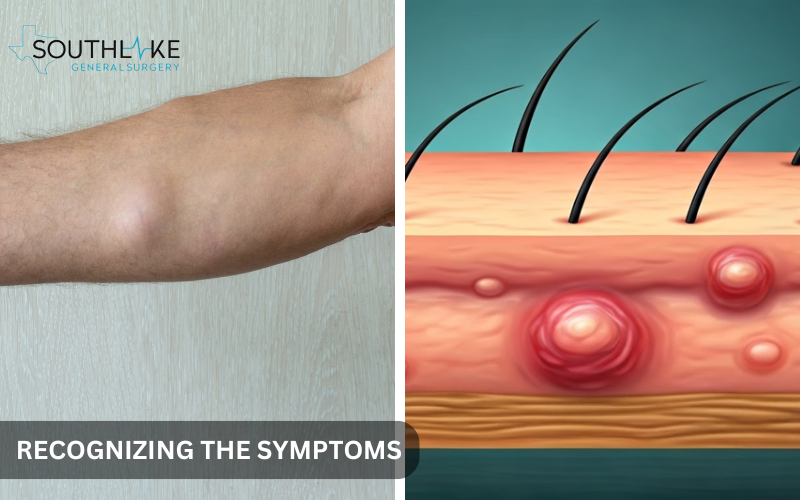
Understanding the signs of lipomas is important. This way, you can get medical advice when you need it. Consider these important aspects:
- Lipomas are soft lumps that feel like they can move. They are located just under the skin.
- They usually don’t cause pain, but they might hurt if they press on nearby nerves or blood vessels.
- You can often find lipomas on the neck, back, shoulders, arms, and thighs.
- It’s important to keep an eye on any changes in the size, shape, or firmness of the lipoma.
- If you notice any strange growth, feel pain, or if the lump looks red or warm, you should get a physical examination by a healthcare professional.
Causes and Risk Factors
The cause of lipomas is not fully understood. However, some factors could make them grow. Research suggests there is a strong link to genetics. If someone in your family has lipomas, you may also have them.
Some health issues can be linked to having a lot of lipomas. These issues include Madelung’s disease and adiposis dolorosa.
Genetic Predispositions and Environmental Triggers
Genetics is important in how lipomas show up. If a family member has had these harmless bumps, you could get them as well. Some genes you inherit from your family can make fat cells grow more than they should. This can lead to the development of lipomas.
Some studies say we do not completely know what environmental factors are involved. However, being overweight or having an injury in a specific area may raise the risk for people who already have a genetic chance of developing lipomas.
We still need more research to prove these claims. By understanding more about genetics and possible environmental triggers, we can find lipomas sooner and take better care of them.
Lifestyle Factors Contributing to Lipoma Development
Genetics affects why some people develop lipomas. However, lifestyle choices can also lead to lipomas in some individuals. For instance:
- Being obese can raise your risk. Extra fat in your body can cause abnormal fat cells to grow.
- Men with alcohol use disorder might have a higher chance of getting a type of lipoma known as Madelung’s disease. This disease makes fat build-up evenly around the neck and shoulders.
- Keeping a healthy weight and drinking less alcohol can lower the risk. This is especially true if you have family members with this issue.
Diagnosis of Lipomas

Diagnosing lipomas usually begins with a physical exam. A doctor looks at the lump’s size, feel, and whether it moves. Sometimes, patients may require additional tests like MRI scans or ultrasounds.
These tests help confirm that it is a lipoma and check for any other issues. In a few cases, a biopsy might be necessary.
The Role of Physical Examinations in Identifying Lipomas
A doctor can often find a lipoma by doing a physical exam. In this exam, the doctor will:
- Look at the lipoma and feel it to understand its texture and features.
- Consider the patient’s medical history, family history of lipomas, and any signs they have mentioned.
- See if the lump hurts, check how it moves, and notice if there is any pain when you press it.
If the lipoma is deeper in the tissue, the doctor may need to do more tests. The details collected during the physical exam help the healthcare provider discover the best ways to treat the condition.
Advanced Diagnostic Tools: Ultrasound and MRI
A physical exam is often enough to detect a lipoma. But, imaging methods like ultrasound and magnetic resonance imaging (MRI) provide clear images of the soft tissue. They can help confirm the diagnosis and check for other health issues.
- Ultrasound uses sound waves to create images. It provides important details about the size, shape, and location of the lipoma.
- MRI uses a strong magnet and radio waves to produce very detailed images. This helps to better examine deep or large lipomas.
These tools help doctors find the best ways to treat patients.
Treatment Strategies for Lipomas
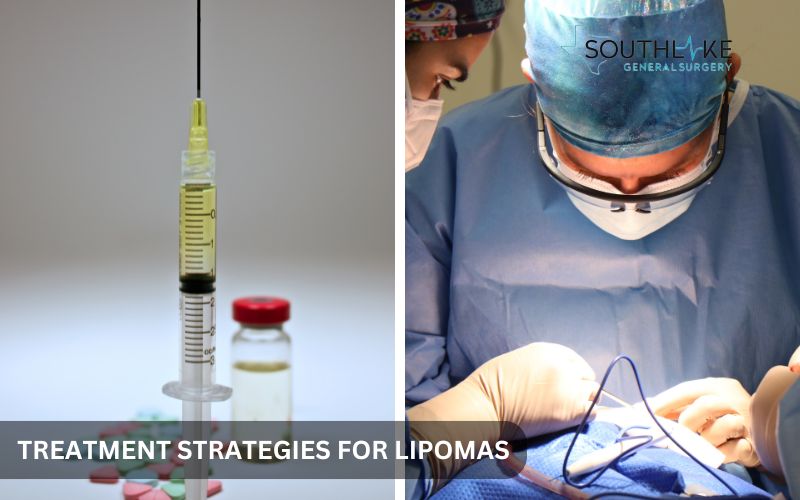
In many situations, you may not need to treat a lipoma. This is correct, especially if it is small, does not hurt, and feels painless. However, if a lipoma bothers you because it changes your appearance, causes pain, or makes daily tasks difficult, there are several treatments you can consider.
The treatment you choose will depend on how big the lipoma is, where it is found, and your general health.
Non-Surgical Options: Observation and Steroid Injections
For lipomas that don’t cause any issues, it’s usually best to watch them carefully. This means checking how big they are and if they change. If a lipoma hurts or becomes bothersome, steroid injections could be a good choice instead of surgery.
- Steroid injections can help reduce swelling and make the lipoma smaller.
- A special medicine is injected straight into the lipoma, and this might shrink it over time.
- Still, the injections may not fully remove the lipoma, so several treatments could be needed.
- It is important to talk with your doctor about what is safe and what risks might come with steroid injections.
Surgical Removal: When Is It Necessary?
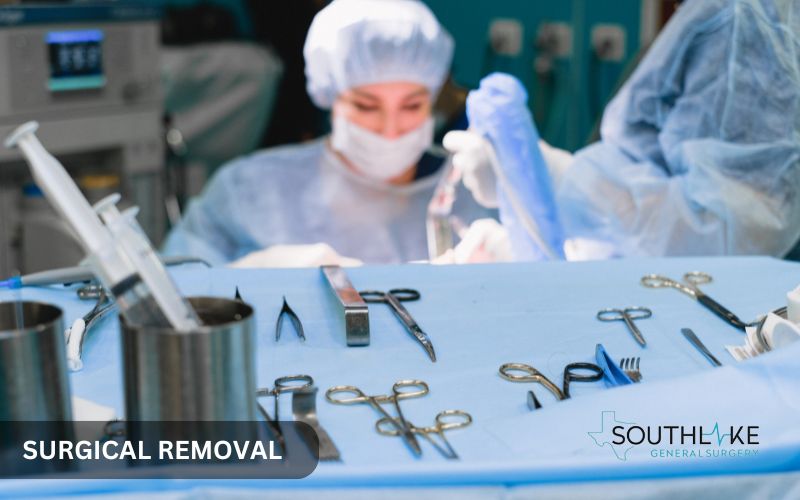
Surgery is the best way to treat lipomas, even though watching and using non-surgical treatments can help some people. Doctors usually suggest surgery if lipomas are big, growing fast, causing pain, or blocking movement.
- The surgery is done through a small cut and local anesthesia.
- You will stay awake, but you won’t feel any pain.
- The doctor will carefully remove the lipoma.
- Surgical excision has a good chance of completely removing the lipoma, which helps prevent it from coming back.
- It is important to talk about the risks and benefits of surgery with your doctor. This way, you can make a good choice.
Aftercare and Monitoring
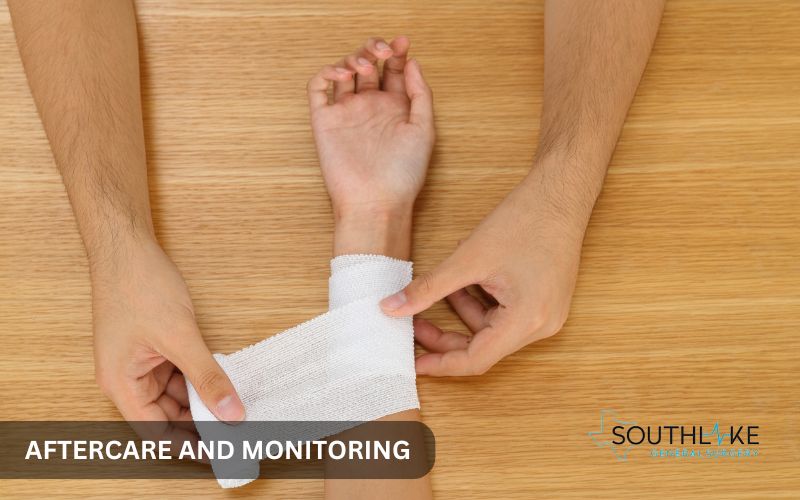
After lipoma removal, it is important to take care of yourself. This helps you heal and feel happy with the results. You need clear guidelines for caring for the wound, managing any pain, and watching the area closely.
This can help prevent problems and handle new ones if they arise. Checking the area is essential for a good recovery over time.
Recovery Post-Surgery: What to Expect
After surgery to remove a lipoma, patients usually feel better. Most of these surgeries use a local anesthetic, which means you can go home the same day. You might feel a little pain, and there could be some bruise or swelling in the area. This discomfort often disappears in a few days.
- After your surgery, your doctor will give you clear instructions on how to care for your wound and manage pain.
- It is important to avoid heavy lifting and hard activities for a while to help you heal.
- Keeping good general health is key. Eating a balanced diet and exercising regularly can help you recover.
- Your doctor will set up follow-up visits to see how you are doing and answer any questions you might have.
Long-Term Monitoring and Prevention of Recurrence

After you have a lipoma removed, it usually does not come back. Still, it’s important to see your doctor for regular check-ups. These visits can help find any signs of it coming back early. This way, you can act if needed.
It is hard to stop lipomas from forming completely. We don’t fully understand why they occur. Still, living a healthy life may lower the risk. This is important for those with a family history. A healthy lifestyle includes eating a balanced diet, exercising often, and drinking less alcohol.
Conclusion
Lipoma treatment options can vary from one person to another. Some people might prefer non-surgical methods. These methods include closely monitoring the lipoma or getting steroid injections. However, others may need a surgical excision if the lipoma causes pain or looks concerning.
After surgery, patients will need some time to recover. They should also keep an eye out for any signs that it might come back. Getting medical advice is key to receiving the right diagnosis and treatment.
If you need comfort, health, or appearance reasons, talking to a healthcare expert can help. Dr. Valeria Simone at Southlake General Surgery can guide you in finding the best care for your needs.
Make an Appointment
If you need help with lipomas, think about visiting Dr. Valeria Simone, MD, at Southlake General Surgery in Texas, USA. Dr. Simone has the skills and experience to help you. She can assess your situation and recommend the best ways to treat it.
She will also give you medical advice to help with your worries about lipomas. To set up your appointment, call +1 (817) 748-0200. This is a good way to take care of your lipoma condition.
Frequently Asked Questions
Can Lipomas turn cancerous if left untreated?
Lipomas are non-cancerous lumps. They typically do not cause serious health issues. It is usually okay to leave them alone, but it is a good idea to visit a doctor for a proper diagnosis. In very rare instances, soft tissue sarcoma, a type of cancer, can look like a lipoma.
Are there any effective home remedies for lipomas?
There are currently no home remedies that can treat lipomas. Some people may offer different self-care ideas. Still, there is no scientific evidence that these ideas are effective. It is best to talk to a qualified healthcare professional for medical advice.
How often should someone with multiple lipomas get screened?
The number of times a person with several lipomas should be checked depends on their health and their doctor’s advice. Consulting with your healthcare provider is advisable. They can give you specific tips on how to monitor your condition and what follow-up care you may need.
Can diet and exercise reduce the risk of developing lipomas?
The exact reason for lipomas is still not completely clear. However, being healthy can make you feel better overall. This means you should eat well and exercise regularly. We need more research to find a solid link between diet, exercise, and the cause of lipomas.
What are the latest advancements in lipoma treatment?
Advancements in treating lipomas are now focused on easier methods. For example, radiofrequency ablation and laser-assisted removal are becoming more popular. These techniques can reduce scars and help you heal faster. They also work well to treat lipomas. Research is still looking for new treatments.
Medically Reviewed By:Dr. Valeria Simone MD
Board-certified General Surgeon at Southlake General Surgery, Texas, USA.
Follow us on Facebook and YouTube.
References:
- Charifa A, Azmat CE, Badri T. Lipoma Pathology. [Updated 2022 Dec 5]. In: StatPearls [Internet]. Treasure Island (FL): StatPearls Publishing; 2025 Jan-. Available from: https://www.ncbi.nlm.nih.gov/books/NBK482343/
- Kolb L, Yarrarapu SNS, Ameer MA, et al. Lipoma. [Updated 2023 Aug 8]. In: StatPearls [Internet]. Treasure Island (FL): StatPearls Publishing; 2025 Jan-. Available from: https://www.ncbi.nlm.nih.gov/books/NBK507906/
- Guler O, Mutlu S, Mahirogulları M. Giant lipoma of the back affecting quality of life. Ann Med Surg (Lond). 2015 Aug 11;4(3):279-82. doi: 10.1016/j.amsu.2015.08.001. PMID: 26468370; PMCID: PMC4556780.
- Lee YJ, Jeong YJ, Lee JH, Jun YJ, Kim YJ. Liposarcoma in the axilla developed from a longstanding lipoma. Arch Plast Surg. 2014 Sep;41(5):600-2. doi: 10.5999/aps.2014.41.5.600. Epub 2014 Sep 15. PMID: 25276658; PMCID: PMC4179370.
- Peev I, Spasevska L, Mirchevska E, Tudzarova-Gjorgova S. Liposuction Assisted Lipoma Removal – Option or Alternative? Open Access Maced J Med Sci. 2017 Oct 14;5(6):766-770. doi: 10.3889/oamjms.2017.186. PMID: 29104686; PMCID: PMC5661715.
- Xiong Y, Yang L, Zhen W, Fangyong D, Feng W, Ting L. Conservative and surgical treatment of pediatric asymptomatic lumbosacral lipoma: a meta-analysis. Neurosurg Rev. 2018 Jul;41(3):737-743. doi: 10.1007/s10143-016-0796-6. Epub 2016 Oct 28. PMID: 27796602.
- Bannayan-Riley-Ruvalcaba syndrome: MedlinePlus Genetics. (n.d.). https://medlineplus.gov/genetics/condition/bannayan-riley-ruvalcaba-syndrome/
- Cowden syndrome: MedlinePlus Genetics. (n.d.). https://ghr.nlm.nih.gov/condition/cowden-syndrome

